
the member magazine for Riverbanks Zoo and Garden | September - October 2023
Jan Stamps, Chair
Alana Williams, Vice Chair
Mike Velasco, Treasurer
Cliff Bourke, Secretary
Robert G. Davidson
Jeffrey T. Reeves
Deneen Shockley
Riverbanks Society Board
Tristan K. Weinkle, DVM, DACVIM, President
Cecilia Fournil, Vice President
Deans Fawcett, Treasurer
Patti Embry-Tautenhan, Secretary
Stephanie R. Jones, Immediate Past President
Emily Bedenbaugh
A. Mattison Bogan
Lauren Greene
James Herlong
Denise Gunter Hudson
Wes Jackson
Shelby Kay Leonardi
Sarah Bovaird Locke
Donna Longo

Lindsey Miles
Matt Mungo
Andrew Reed
Allison Sanford
Deonca Shuler
Richard Slater
Dawn Staley
Sheila M. Willis
Riverbanks Executive Leadership Team
Thomas K. Stringfellow, President & CEO
Christie Vondrak, Chief Administrative Officer
Lochlan Wooten, Chief Operating Officer
Rachael Bashor, Vice President of Mission Engagement
Kevin Eubanks, Vice President of Operations
Ashley Harris, Vice President of Finance
Monique Jacobs, Vice President of Advancement
Riverbanks Senior Staff
Brian Blankenship, Director of Safety & Security
Andy Cabe, Director of Horticulture
Eric Helms, Director of Construction & Planning
Tracy Hughes, Director of Human Resources
Jeremy Keen, Director of Guest Experience
Greg Peccie, Director of Animal Care


John Thompkins, Director of Information Technology
Martha Weber, DVM, Director of Animal Health
Kendra Bottini, Aquarium Curator

Sean Foley, Curator of Herpetology
Colleen Lynch, Curator of Birds
Alyson Proveaux, Curator of Mammals
Subscriptions to Riverbanks are $24 per year. Members of Riverbanks Society are entitled to one free subscription along with free admission and guest passes, discounts at Zoo & Garden gift shops, invitations to special events and much more. To subscribe to Riverbanks or to join the Society, visit riverbanks.org or call 803.779.8717 and press 1.
Riverbanks Magazine
Editor - Monique Jacobs
Design Direction and Layout - Majken Blackwell
Contributing Design - Trenton King
Contributors - Hunter Balog, Kendra Bottini, Christian Feldt, Jessie May, Beth Owens, Amanda Schlegel, Martha Weber
Contributing Photographers - Larry Cameron, Lynn Hunter Hackett, Michael Jones
Cover Photograph - Rockhopper penguin chicks
MISSION POSSIBLE CONTENTS CONNECT. Director’s View .................................................................................. 1 A message from the President & CEO Animal Spotlight .............................................................................. 14 Meet one of the Zoo’s residents In the Know .....................................................................................20 Insider “tails” and tidbits ACT. Digging Deeper................................................................................. 12 Tips from the experts to help grow your garden Rounds with the Vet ........................................................................ 18 Animal health care on the move IMPACT. Into the Wild...................................................................................... 6 Saving species locally, regionally and around the world Keeper Corner ................................................................................. 16 Caring for the animals, caring for our planet Mission Possible ................................................................................ 8 The people, partners and programs behind the Riverbanks mission Riverbanks Zoo and Garden is located at 500 Wildlife Pkwy, Columbia SC 29210 Riverbanks Hours of Operation Open daily 9am-5pm Closed Thanksgiving and Christmas days. 14 20 Volume XLII, Number 5 Riverbanks is published six times a year for members of Riverbanks Society by Riverbanks Zoo & Garden, Columbia, South Carolina. 4
Riverbanks Park Commission
Fall has arrived and the event season is in full swing!
We are excited to announce that this year Riverbanks Zoo and Garden will be introducing an all-new lights experience inspired by nature—Wild Lights—and we can’t wait for you to join us! Wild Lights is a fresh take on the holiday lights experience and will create a more meaningful connection to our mission. While Riverbanks’ original lights program ran for 35 wonderful years, we are excited to present this brand-new event that will shine a light on the beauty of nature and the importance of caring for our natural world. (Learn more on page 4.)
In appreciation of the continued support of our valued members and as a nod to a longstanding member benefit, all Riverbanks members will receive one free visit to Wild Lights this year. Starting in 2024, everyone who attends Wild Lights will be required to pay an admission fee to help offset the increased cost of operations. Rest assured, Riverbanks members will receive exclusive discounts to Wild Lights, just like our other events.

Events at Riverbanks are one of the many ways we generate much-needed support to operate the park and support our mission of wildlife conservation. Your annual contribution as a member and donor is essential to the care and conservation of our animals and plants as well as an investment in the quality of life in our community. Thank you for helping make Riverbanks what it is today and for being our champions. Together we can make a lasting impact on wildlife and wild places.
See you at the Zoo –
Thomas K. Stringfellow President & CEO


DIRECTOR’S VIEW
LEADING THE CHARGE
Recently you may have heard about the work Riverbanks is doing to collect giraffe plasma (part of the blood that carries important antibodies and proteins to help fight disease) and provide the giraffes with beneficial hoof care. But did you know that similar practices can be done for rhinos, too? Riverbanks is helping to lead the charge in collecting rhino plasma and advancing rhino footcare.

For the past year and a half, Riverbanks has been working closely with researchers at the American Institute of Rhinoceros Science (AIRS) to collect data through varied hands-on training with our rhinos. The goal of the AIRS research is to build a collection of information such as heart rate, body conditioning and behavioral studies from rhinos across the country. The data collected will aid keepers in making better and more informed husbandry decisions, which will benefit rhino welfare across the board.
In August 2022, the hoofstock team along with our crash of rhinos, in partnership with AIRS, began to explore the feasibility and approach to voluntary blood sample collection. The monthly samples needed for this study proved to be a huge challenge. Drawing blood samples is difficult, but working with a multi-ton rhinoceros to allow a blood draw voluntarily is something else entirely!
Through countless training sessions, trials, and even barn renovations, we are happy to share that two of our rhinos voluntarily gave blood samples—and we are working on our third. Nineteen-year-old Bill has shown incredible skill in training, so much so that keepers and vets decided to push past the few vials needed for the study. In December 2022, the team collected 8 vials, the next month 12, and the next month 27 vials. By summer, keepers successfully collected and processed about 78 vials of plasma. Our goal is to obtain 3 liters of plasma, enough needed for a lifesaving transfusion.
Plasma transfusions can be the difference between life and death for young rhino calves or adults facing intense illnesses. At the time, we were excited to have reached our team goals for plasma collection. Then the vet team began cataloging our plasma sample into a national inventory, and we learned that Riverbanks is one of only three facilities to have repeatedly drawn plasma voluntarily from a white rhino. The success of our process became clear.
2 RIVERBANKS ZOO & GARDEN
-Ethan Fulkerson | Mammal Keeper
With that distinction, we had the exciting opportunity to send one of our keepers to a three-day International Rhino Keeper Association workshop hosted at The Wilds in Ohio. During the workshop, our keeper led a presentation detailing Riverbanks’ long journey into voluntary blood collection, sharing our failures, procedural adjustments and successes. The response was astounding with multiple inquiries from zoological organizations wishing to implement our procedures at their own facility. One inquiry came from a rhino conservation center and orphanage in South Africa, an institution working to protect and rehabilitate rhinos in their natural habitat. Our collaboration with them is extremely meaningful because it illustrates how the intense effort put forth with our small herd of rhinos is directly impacting the conservation of wild white rhinos.
Training for blood draws is not our only focus. Having seen the benefits of ongoing foot care for our giraffes, the Riverbanks hoofstock team recently decided to take preliminary steps towards a foot care program for our rhinos. In the past decade, major developments have taken place regarding the foot care of several species, especially hoofstock. However, few facilities are actively training for white rhino foot care.
Our team is now in the first stages of developing rhino foot care protocols, and the rhinos have shown an adeptness and willingness to learn. We currently monitor their toenails for any cracks and are now using tools to clean and trim nail cracks. Moving forward, we will begin hoof block training.

Like the hoof work we do with the giraffes in our care, we plan to implement the use of a wood block to train the rhinos to comfortably rest a leg upon a block while keepers inspect and care for the undersides, soles and nails of the foot. As our young herd ages, this work with the foot block will keep their legs and ankles stretched, almost acting like a form of rhino yoga! We want to make sure that Bill, Winnifred and Kande’s mobility remains top tier as they age, especially when it comes to navigating the diverse terrain of their habitat.
The hoofstock team is working hard to offer the best care possible to our crash of rhinos. We are beyond ecstatic to lead the approach to rhino plasma collection and its undeniable benefits, pioneer rhino foot care practices, and participate in national conferences and workshops to share our knowledge with others while advancing our professional development.
3 CREATING CONNECTIONS. INSPIRING ACTION. IMPACTING CONSERVATION.
Our small herd of rhinos is directly impacting the conservation of wild white rhinos.
ALL-NEW
A Fresh Take on the Holiday Lights Experience

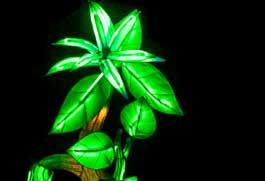

Nearly 60 Spectacular

Wildlife-themed L anterns

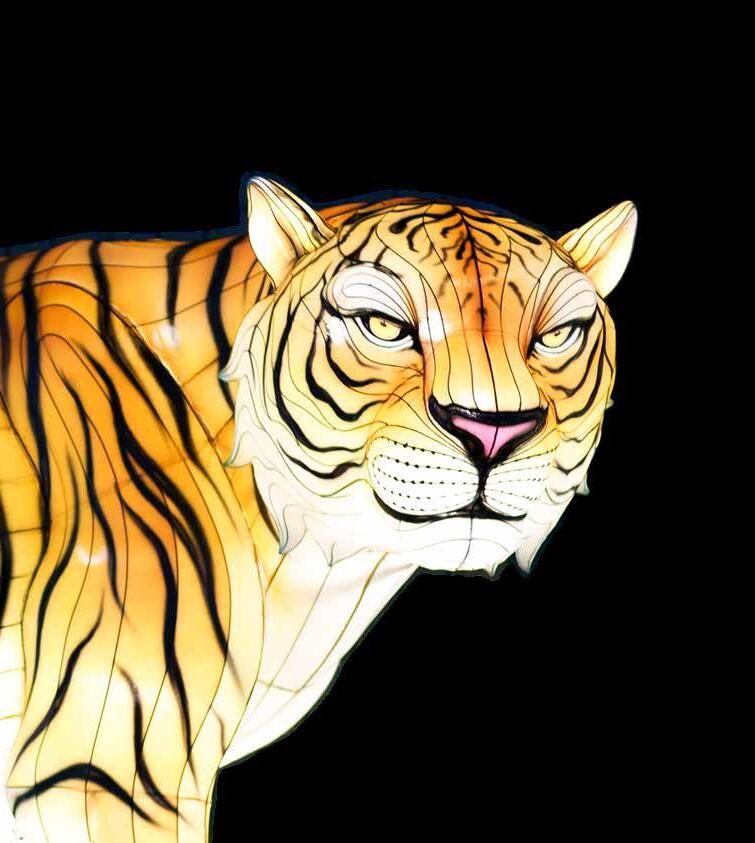
Engaging Interactives, Photo Ops, Nightly Snowfall and Visits with Santa Select Nights, November 17- January 14

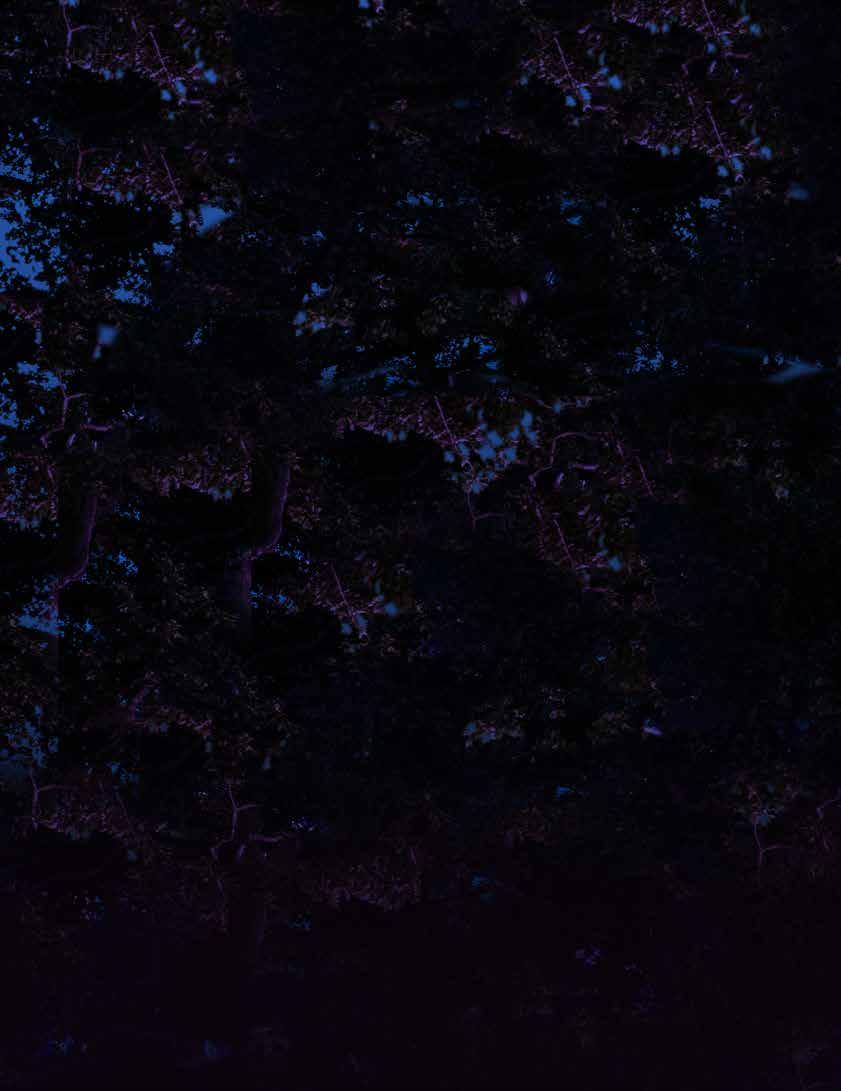
MEMBERS RECEIVE ONE FREE VISIT IN 2023

Advance Registration Required Visit riverbanks.org



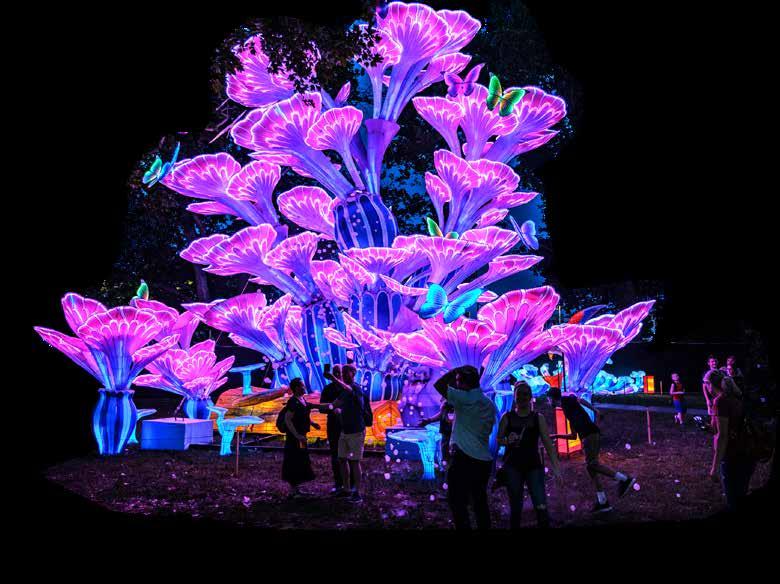


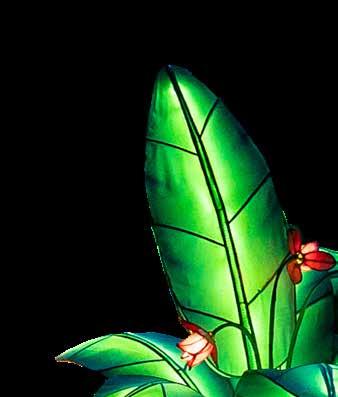

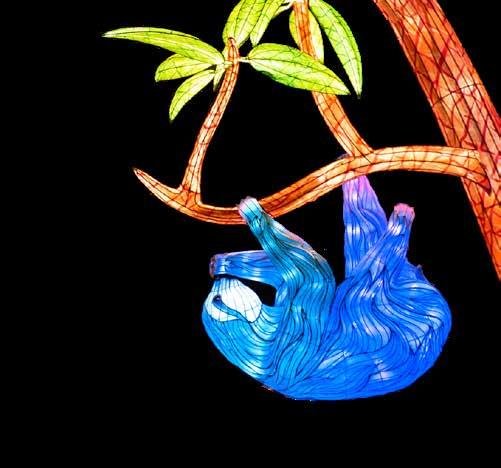


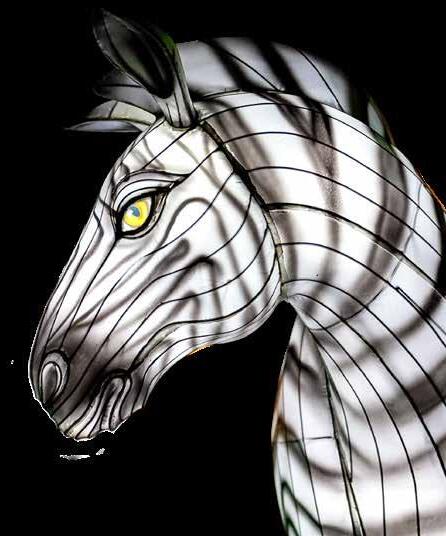
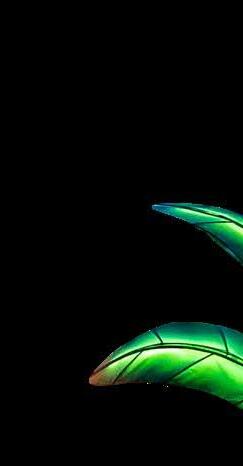





6 RIVERBANKS ZOO & GARDEN INTO
THE WILD
THE IMPORTANCE OF LEAVING WILDLIFE WILD
In late 2019, the South Carolina Department of Natural Resources (SCDNR) confiscated over 200 eastern box turtles from one individual, destined for international markets of wildlife trade.

SCDNR contacted the University of Georgia Savannah River Ecology Lab (SREL) to care for the turtles, which posed a unique opportunity to study movement, survival, and disease transmission of both wild and released turtles. A grant from Riverbanks’ Satch Krantz Conservation Fund helped to support some aspects of this research. Collectively, these efforts will continue to inform management practices of confiscated and surrendered turtles in the conservation of wild populations. All the adult turtles from this seizure have since been released, and in June of this year, Riverbanks staff participated in the release of many of their offspring.
This specific confiscation was just one of many that helped the SCDNR and other stakeholders advocate for legislation that would redefine native turtle ownership and trade laws in South Carolina. In 2020, Governor Henry McMaster signed a bill that bans most commercial trade of the 13 native turtle species in South Carolina. Wild turtle ownership laws were also tightened up, marking a turning point in the state’s stance on addressing wildlife trafficking.
Eastern box turtles are just one of the many North American native turtle species that are overharvested from the wild for illegal trade. Every year, hundreds of thousands of turtles are exported from the United States to supply food, pet, and medicinal markets abroad. Most turtle species are long-lived and slowly maturing. This means that for a healthy population, there must be large numbers of adults. When any number of adults are removed, wild turtle population growth is drastically altered.
Things Everyone Can Do To Help Protect Our Native Turtle Species
• When you see a turtle in its natural habitat, leave it alone. Removing turtles can affect their populations and potentially spread wild diseases to household pets or humans.
• Don’t add specific locations to pictures of turtles online. Wildlife traffickers are known to use publicly available locations to track down turtles and other wildlife.
Want to help Riverbanks protect species from wildlife trafficking? Consider donating to the Satch Krantz Conservation Fund!
7 CREATING CONNECTIONS. INSPIRING ACTION. IMPACTING CONSERVATION.
Hunter Balog | Conservation Project Manager
SUSTAINABLE
SHOPPING
Amanda Schlegel | Donor Engagement Manager
From coffee to crafts, Nate Ennis, General Manager of SSA, Riverbanks’ exclusive partner in food & beverage, retail and admissions, finds ethically sourced products that meet the needs of our guests and support conservation initiatives worldwide. He shares the significance of choosing materials responsibly and how small actions have a tremendous impact.
You also can find beautiful art pieces in our gift shop made from snare wire set by poachers to capture prey in Zimbabwe.


MISSION POSSIBLE RIVERBANKS
& GARDEN 8
ZOO
Can you tell us about each of our new partners?

This year we have connected with two new food and retail partners to better support Riverbanks’ mission. You can now find Ampersand Coffee in our concession locations. The brand is not only organic and fair trade but also Smithsonian Bird Friendly certified and Rainforest Alliance certified. This means you can be assured that your next cup of coffee at the Zoo is grown in a way that has a lasting impact on conservation.


You also can find beautiful art pieces in our gift shop made from snare wire set by poachers to capture prey in Zimbabwe. Painted Dog Conservation employs scouts to find and collect this dangerous snare wire to turn it into beautiful pieces that promote and educate about the nonprofit’s work to protect African wild dogs.

How do Riverbanks’ new mission-driven partnerships help aid in conservation and sustainability both at the park and beyond?
We may not realize that some of the everyday products we use can have lasting impacts on our environment. By supporting organizations that are taking meaningful actions, we also are able to educate our guests, on ways to make a difference. We hope to always continue our mission to “... create meaningful connections and inspire actions that will have a lasting impact on conservation.”
What prompted the switch?
Though you may not think of our restaurants and gift shops as part of what makes Riverbanks a leader in conservation, we look for opportunities in every aspect of our operation to support our mission. From reducing plastics to using biodegradable disposable products, choosing plush made from recycled water bottles to using recycled paper for receipts, no action is too small to make a difference!

What should our guests look for when shopping sustainably outside of Riverbanks?
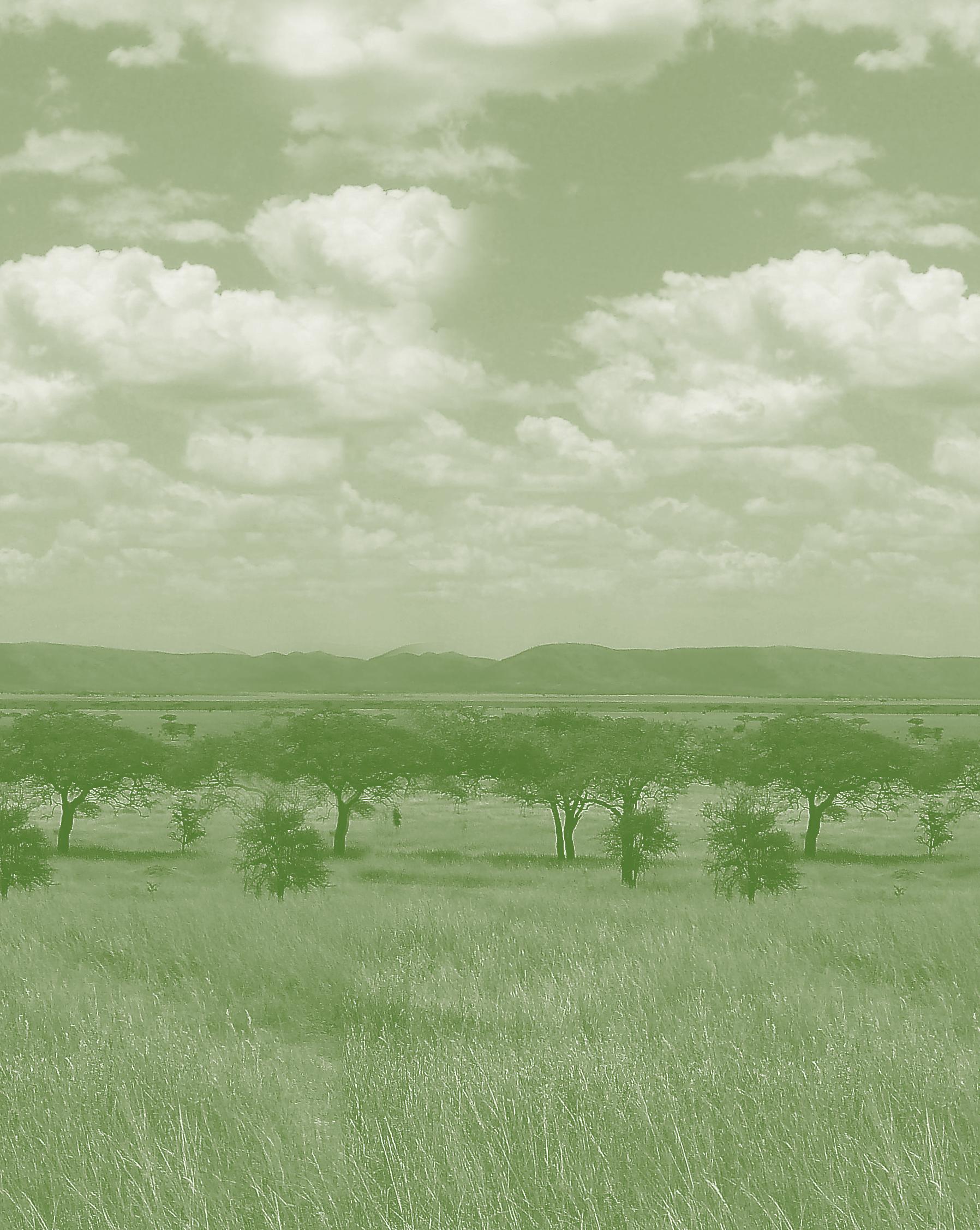
Do your research. We live in a time where there is an abundance of information about the products in your favorite stores. Organic and Fair-Trade certifications are one way to easily identify good choices, but also ensuring that products do not contain palm oil, which is primarily harvested in the habitats of many endangered animals. Foods that are produced locally or regionally also means that fewer fossil fuels were used to get them to the store shelves. You can find a full list of coffee roasters who are Smithsonian Bird Friendly at nationalzoo.si.edu

9 CREATING CONNECTIONS. INSPIRING ACTION. IMPACTING CONSERVATION.
Winter Break Zoo Camp
Spectacular Scales and Slime
December 18-22
8:45am - 4:00pm

K-4th Grade
Campers will explore the many unique ways keepers care for our scaly and slimy residents at Riverbanks.

Registration opens September 15. Visit riverbanks.org
Friday, September 29 | Tickets available at riverbanks.org
Proceeds support the care and conservation of animals and plants at Riverbanks and beyond.












11 CREATING CONNECTIONS. INSPIRING ACTION. IMPACTING CONSERVATION. B E S T E V E N T V E N U E B E S T W E D D I N G V E N U E B E S T C O N F E R E N C E V E N U E P L E A S E V O T E ! C O N T A C T U S T O D A Y T O S E C U R E Y O U R D A T E ! T H E N E W E S T H O L I D A Y P A R T Y E X P E R I E N C E I N T O W N Visit riverbanks.org Access Your New Digital Membership Card Visit riverbanks.org/membership To locate your member number, look under the barcode on your membership card.
Tren ding Tropicals
Not just your Grandma’s pothos anymore
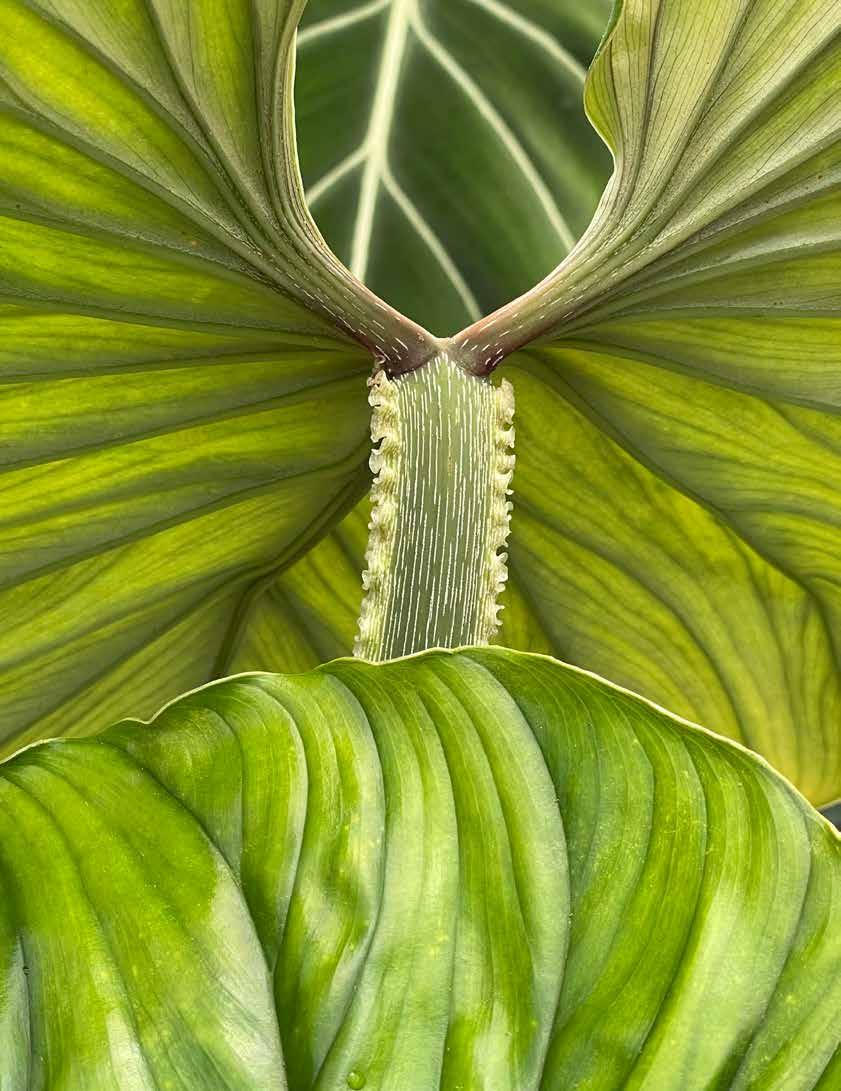 Beth Owens | Registrar, Botanical Garden
Beth Owens | Registrar, Botanical Garden
DIGGING DEEPER
RIVERBANKS ZOO & GARDEN 12
Thanks in part to the pandemic, the interest, and availability, of tropical plants has surged in the past few years. At Riverbanks, we have always had that interest and are thrilled to see it catching on. We have a multitude of these exotic beauties in our collection and strive to make them available for our guests’ enjoyment, in our garden beds and Zoo exhibits as well as through our members’ only plant sales.
The word “houseplant” is a relative term, at least for most of us. Part of the “fun” of being a plant parent is moving houseplants outside in spring, then scrambling last minute to get them all back inside before the first frost. Most of the tropical plants available these days are easy to care for if you follow the golden rule of plant care: try to replicate their native environment. Doing a little research of a plant’s native habitat will pay off. And fortunately, most of the tropical plants available these days seem to flourish in our heat as long as they receive adequate watering.
With such a wide range of beautiful and interesting tropical plants available, choosing a few to showcase is a difficult task but here are some of our favorites:
Monstera epipremnoides, aptly named the Swiss cheese plant, makes quite the statement with its large, holey leaves. It can reach up to ten feet tall indoors, but in its native range in Costa Rica, can easily climb to thirty feet. It is best grown on a totem for support with indirect sun.
Seemannia nematanthoides ‘Evita’, known as hardy gloxinia, is indeed hardy here. It is late to emerge in the spring, but when it does it is a showstopper! Growing only one foot tall, it can spread to four feet in width. The orange-red blooms in summer attract hummingbirds until frost. ‘Evita’ prefers part sun to light shade.
Crossandra infundibuliformis, commonly called firecracker flower, is a perfect choice for those of us in the Midlands as it loves humidity. It prefers part shade, growing one to three feet tall, and makes an ideal houseplant for the winter.


Philodendron plowmanii has large, glossy leaves and the stalks have ornate, ruffled edges. This philodendron is terrestrial, growing across the ground rather than climbing a tree so will require a large container to grow in. It needs bright, indirect sun and high humidity.
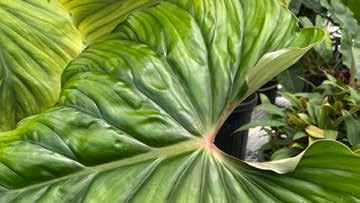

CREATING CONNECTIONS. INSPIRING ACTION. IMPACTING CONSERVATION. 13
Let’s face it, houseplants have come a long way from the pothos (climbing plant known for its sometimes variegated, heart-shaped leaves) and airplane plants many of our grandmothers had.
SIAMANG

Symphalangus Syndactylus
CONSERVATION STATUS
Near Threatened Vulnerable Least Concern
Endangered
Critically Endangered Extinct in the Wild
14 RIVERBANKS
ZOO & GARDEN
ANIMAL
- Jesse May | Mammal Keeper
SPOTLIGHT
Where on Earth?
Siamangs are arboreal and live in the canopies of the rainforests and monsoon forests. They can be found in the mountains of the Malay Peninsula, Sumatra rainforests, and southern peninsular Thailand.
Measuring Up
Male siamang Max weighs 32 pounds; female siamang Hitam weighs 28 pounds.
Digs at the Zoo
Our siamang pair lives on Ape Island across from Wild Burger. Max, now 22 years old, came to Riverbanks in April 2006. Hitam, 19 years old, arrived at the Zoo in January 2020.

Weird But True
Just like humans, Max and Hitam will sometimes argue with one another like an old married couple. One will sometimes get annoyed at the other for not paying enough attention to them or for getting something they did not get. Max and Hitam get along very well, but just like we argue with our significant others, they can do the same thing. Max is also notorious for trying to steal keeper jackets and sweatshirts to play with and swing around. He always gives them back, but not before he gets to have some fun.
Did You Know?
Siamangs are a type of gibbon belonging to the family of lesser apes. Yes, they are apes, not monkeys! Every gibbon species has their own unique song, but their songs differ from one siamang pair or family group to another. Siamangs are one of the loudest gibbons. They can be heard up to two miles away, even in dense rainforests, and can reach about 99 decibels. They have what’s called a gular sac, or throat sac, that is inflated when they vocalize. Not only do their vocalizations serve as a bonding activity, but siamangs also use their singing rituals to defend their territory. The gular sac will inflate to almost the size of a cantaloupe when they sing. Siamangs and other gibbon species travel through the forests by swinging from limb to limb using their arms. This mode of transportation is called brachiation, and siamangs can reach up to speeds of 35 miles per hour!
CONSERVATION CONNECTION
Siamangs, along with all other gibbon species, are endangered. Siamang numbers have declined by 50 percent over the last 40 years. The most urgent conservation problems siamangs face are the encroachment and expansion of palm oil plantations, illegal logging, and the illegal pet trade. Many adults are killed so the infants can be taken and trafficked into the pet trade. Loss of habitat is a serious threat not only to siamangs but also the entire ecosystem. We must do our part in changing our consumption of natural materials.
Riverbanks takes an active role in reducing palm oil consumption and educating guests on why being a conscious consumer is important for protecting our ecosystems going forward. Riverbanks is accredited by AZA (Association of Zoos and Aquariums) and supports AZA’s Ape Taxon Advisory Group (Ape TAG). The Ape TAG is dedicated to managing ape populations under human care and backing efforts for more research, increasing anti-poaching patrols and law enforcement in native habitats, creating more community involvement, and other avenues to help maintain and protect the wild population. One of the best ways to determine if products contain palm oil or use sustainable palm oil is through the Cheyenne Mountain Zoo’s Palm Oil Scan app. You can take an active role in conservation by being a conscious consumer and helping save siamangs in their native habitats.
CREATING CONNECTIONS. INSPIRING ACTION. IMPACTING CONSERVATION. 15
Busy Birds Busy Keepers
 Christian Feldt | Bird Keeper
Christian Feldt | Bird Keeper
While you were enjoying a welcome break in our lorikeet aviary this past spring and summer, our flock was hard at work raising young lories. Lorikeets typically form long-term pair bonds that may last a lifetime with one mate, or they sometimes form larger social groups of three to four birds with some members of the group acting as helpers. Nest helping is not uncommon in many birds and may allow practice parenting or facilitate the inheritance of a prime nesting territory. Let’s face it, all parents can use some extra help!
Lorikeet species are found in tropical and sub-tropical habitats and will nest year-round, although most of the breeding activity at Riverbanks occurs from February through July. Our lorikeets have lots of options to choose their own partners and nesting sites. The aviary hosts 25 to 30 nest boxes (like wild tree cavities), which are carefully maintained. Lorikeets lay two to three eggs in a clutch and may have two to three clutches of eggs in a season. Once laid, a lorikeet egg is incubated for 25 days, resulting in a hatchling with pink skin and white down feathers that is just a little bigger than a quarter! Eyes are closed, and the tiny chick is completely dependent on parents for food and warmth.
16 RIVERBANKS ZOO &
KEEPER
GARDEN
CORNER
Chicks stay with their parents in the nest boxes for about a month before they move to the Bird Conservation Center for partial-hand rearing, which means our keepers act as nest helpers and care for our chicks as they continue to grow. You can often see chicks being fed in the Brooder Room window. This move allows keepers to socialize the lorikeets, making them comfortable with guests in an interactive aviary.
Riverbanks is a leader in lorikeet breeding, and 82 chicks from our flock have joined interactive flocks at 12 other facilities accredited by AZA (Association of Zoos and Aquariums) in the past ten years. This year we successfully hatched eight lorikeets, keeping the lorikeets—and lorikeet keepers—busy all summer!


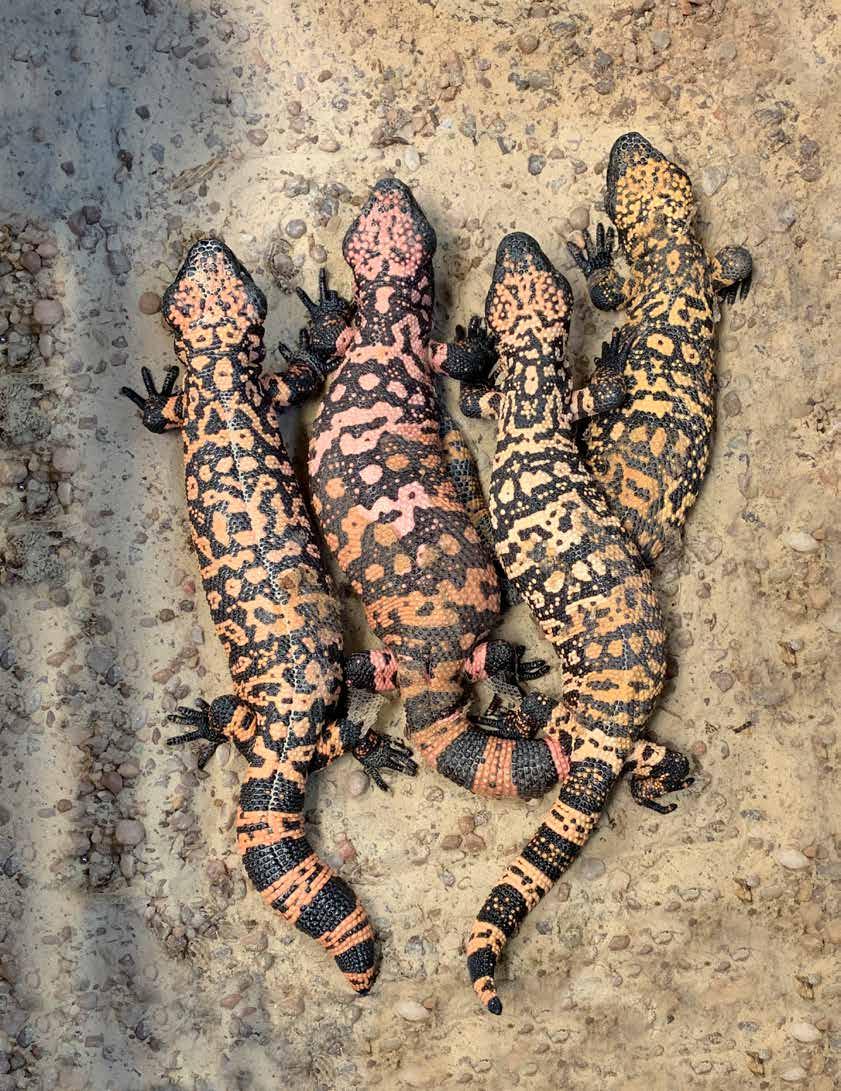
ROUNDS WITH THE VET 18 RIVERBANKS ZOO & GARDEN
HOW TO HEAL A GILA
Several months ago, our reptile team noticed that one of the female Gila monsters weighed a lot more than the other females, and her body looked rounded (she’s the second from the left in the photo). They brought her to us for an exam and blood work. She appeared to be very healthy, and an ultrasound of her body showed that the roundness was being caused by many large follicles (Fluid-filled sacs) on her ovaries. We hoped this meant that she was getting ready to lay eggs, so we had the team take her back to the habitat and asked them to monitor her closely.
Over the next six months, the Gila monster was active and eating well, but she did not lay any eggs. We rechecked her ovaries with another ultrasound and noted that all the large follicles were still present. Since it did not seem that she was going to lay eggs, we were concerned about leaving the follicles in place. If they ruptured, she could develop peritonitis, which can be life-threatening. We talked with the reptile team and agreed to take her to surgery to remove her ovaries.
The surgery took about an hour from start to finish, in part because we had to make a very long incision as the ovaries and follicles were so big. Before surgery, the Gila monster weighed 993 grams (almost half a pound). After surgery, she weighed 547 grams – the ovaries and follicles made up almost half of her body weight! Removal of this much tissue can have serious consequences for an animal, so we have been monitoring her very closely after surgery.
The Gila monster currently is receiving fluid therapy and multiple medications for pain management. We have also been treating her incision with our new therapeutic laser to help promote healing. Her ovaries have been sent to our pathologists to find out if there was an underlying disease process that led to her having so many large follicles. Once her incision has healed, we expect that she will return to her habitat in the Aquarium & Reptile Conservation Center.
NEW TECHNOLOGY AND ANIMAL CARE
Riverbanks recently purchased a medical grade therapeutic laser to improve quality of life for aging animals. The laser uses infrared light to alter cellular chemistry, which decreases inflammation and pain and promotes healing.
Dr. Weber, Director of Animal Health, explains, “There are many medical and surgical applications, but my main hope is to use the laser as an adjunct to medicines for arthritis management in our elderly animals.” Right now, Riverbanks is primarily using the laser on goats, who are easy to hold for treatment. Keepers have started training the gorillas and some cats to accept laser treatment voluntarily. Koshka, the Zoo’s elderly Amur tiger, has undergone laser treatment under anesthesia to help with a wound caused by an ingrown claw.
19 CREATING CONNECTIONS. INSPIRING ACTION. IMPACTING CONSERVATION.
(MONSTER)
Martha Weber MPH, DVM, DACZM, DACVPM | Director of Animal Health
The fall season can bring about a lot of change in the animal world as air temperatures decrease and light cycles shorten. August and September are the end of the nesting season for sea turtles on our coast. This is also the time of year that Riverbanks’ sea turtles are typically released. Water temperatures are still warm with lots of live prey, and our turtle would be approaching its second birthday as well as the targeted release size.
Our resident green sea turtle, Destiny, is preparing to be released. Destiny came to us in October 2021 as a hatchling that was just a day old. Born on Garden City Beach, Destiny was a turtle that remained in the nest after all the other turtles had hatched and emerged. Turtle release for the Aquarium staff is a bittersweet event. Releasing an animal that has been head-started is the epitome of conservation and why so many are involved passionately in our field. Conversely, after two years you can imagine the many lives our wonderful ambassador has touched, and Destiny will be missed by many. So what does a turtle release look like? About a month prior to release, the sea turtle is removed from the exhibit and placed in a large back-of-house holding tank. During this holding period, the turtle will be introduced to live food and asked to forage more on its own for its typical diet of fish, vegetables and turtle gel. Aquarists become very “hands off” with the turtle in an attempt to break
down any imprinting that has occurred in the last two years. The turtle gets a full veterinary exam to ensure it is in top health before release. A few days prior to release, South Carolina Department of Natural Resources (SCDNR) pays the turtle a visit in order to PIT tag it. PIT tagging is very similar to how dogs are microchipped.
On Release Day, aquarists take final measurements before loading up the turtle. Weight, length of shell (called carapace length), and width is recorded. The turtle is transported without water (called dry docking) with some damp towels in a container that is snug but not cramped.
Most of our green sea turtles are released at Hobcaw Barony in Georgetown, South Carolina. Once the team arrives onsite, Zoo and SCDNR staff travel to the salt marsh and release the turtle into the waterway that meanders out to North Inlet. Typically, it is a joyous event with many of the volunteers that watch over the nests during the season there to cheer on the turtle.
As we bid farewell to Destiny, Riverbanks gains a new ambassador to add to the long list of turtles that have been fortunate to swim in the Aquarium & Reptile Conservation Center.

RIVERBANKS ZOO & GARDEN IN THE KNOW 20
Kendra Bottini | Aquarium Curator
CONSERVATION Through Responsible Travel

Riverbanks Zoo and Garden is pleased to again offer conservation safaris to some of the world’s best wildlife destinations in partnership with Safari Professionals. For many travelers, Africa tops the list of exciting wildlife destinations. But there are incredible opportunities to view wildlife in countries around the world: far-away destinations such as the Galapagos Islands, Costa Rica, India, Malaysia and Australia. Closer to home, the wilds of Alaska and Yellowstone National Park offer opportunities to view wildlife we may be more familiar with. And a journey to our neighbor to the north, Canada, allows us to view polar bears, arctic foxes, wolves and beluga whales in Churchill, Manitoba.
Through our partnership with Safari Professionals, we can offer you the opportunity to work with the experienced wildlife travelers of Safari Professionals to design your own personal wildlife safari – an itinerary custom-designed to meet your interests, needs and expectations. While private wildlife safari planning usually costs $500, this fee is waived for you as a member of the Riverbanks family. In addition, the Zoo will receive a contribution to our conservation programs with each private safari.
To learn more about any of Safari Professionals’ conservation destinations, please visit safariprofessionals.com/riverbankszoo

Non-Profit Org. U.S. Postage PAID Columbia, S.C. Permit No. 90
RIVERBANKS SOCIETY 500 Wildlife Parkway Columbia, SC 29210-8014

























































 Beth Owens | Registrar, Botanical Garden
Beth Owens | Registrar, Botanical Garden






 Christian Feldt | Bird Keeper
Christian Feldt | Bird Keeper





